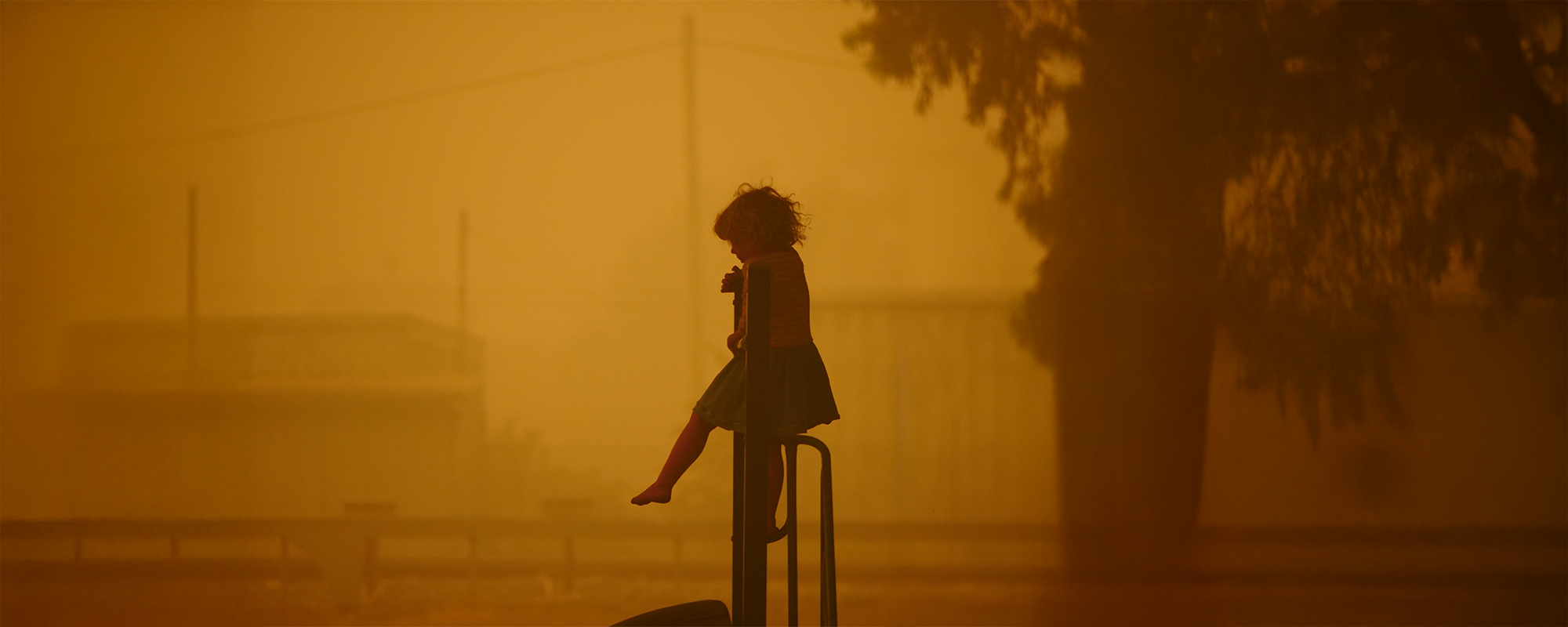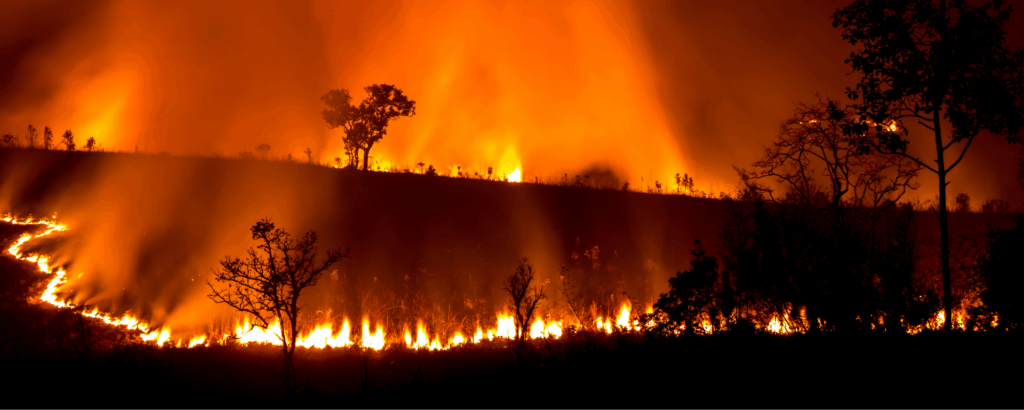Nearly five years ago, the Royal Commission into National Natural Disaster Arrangements—sparked by the Black Summer bushfires—identified a major gap: Australia did not have a single, comprehensive source of climate risk information. Governments, emergency services, and communities need a report like this to prepare for climate-driven disasters.
Since then, Australia has faced catastrophic floods, bushfires, droughts, and heatwaves—underscoring the urgent need for better climate risk data.
Soon, the Australian Government will release the National Climate Risk Assessment—the first comprehensive analysis of how climate change will affect Australian communities throughout this century.
In the meantime, here are three things we can expect from the report—and three priorities the Albanese Government must focus on.
1. Serious climate impacts are hurting Australians now and could get worse
In the first half of 2025, Australia faced a cascade of climate disasters: repeated flooding in Queensland and NSW, a tropical cyclone near northern NSW, record marine heatwaves devastating reefs in WA and Queensland, and severe drought in parts of Victoria, SA and Tasmania—leaving farmland parched and fire-prone. These events, driven by climate change, have already cost over $1.8 billion, excluding uninsured losses.
Australians are seeing these events grow more frequent and extreme, but the full picture remains hard to grasp. That’s why the National Climate Risk Assessment is crucial—it will, for the first time, provide a comprehensive overview of how climate change is impacting our lives, now and into the future. It will show that we must act now to cut climate pollution and make our communities more resilient to lessen the disaster impacts we face in the future.
The initial findings already highlight alarming risks across 11 key systems, including Defence, Regional Communities, and Health. It warns that increasingly severe and overlapping disasters will have far-reaching effects:
- Emergency services and volunteers will be stretched beyond capacity.
- Rural communities will face more climate-driven crises, with rising physical and mental health impacts.
- Inadequate infrastructure could force community displacement over time.
2. Urgent cuts to climate pollution are needed – in Australia and across the globe – to avoid the worst impacts of climate change
The National Climate Risk Assessment will outline how climate impacts escalate with rising global temperatures. The report will show how climate change is already impacting us at a 1.51°C of warming, and the consequences of reaching 2°C by 2050 and 3°C by century’s end—the path we’re currently on.
At 2°C, Australia will face more dangerous fire weather, longer fire seasons, intense rainfall, and more frequent, deadly heatwaves—putting more communities and livelihoods at risk. Forests in the southeast of Australia – an area heavily impacted by Black Summer – would see a 47% increase in extreme fire weather. Over 750,000 properties would be uninsurable due to climate risks by 2050, an increase of 170,000 from 1990.
At 3°C, the consequences are dire: twice as many catastrophic fire weather days and regular 50°C temperatures in cities like Sydney and Melbourne. A sea level rise of one-metre would put 160,000 to 250,000 properties at risk of coastal flooding. Almost 1 in 10 (8.8%) of households would be uninsurable due to the climate risks they experience.
In short, without sufficient action to cut emissions, Australians will see dramatically escalating climate risks. Industries like fisheries, tourism and agriculture will experience catastrophic impacts and many communities who now face medium risks of extreme weather today will likely be unliveable.
3. The National Climate Risk Assessment will provide the information emergency responders, businesses, and communities need to prepare for future disasters
Nearly five years ago, the Royal Commission into National Natural Disaster Arrangements, prompted by the Black Summer bushfires, highlighted the lack of a single, comprehensive source of climate risk information. This gap made it harder for governments, emergency services, and communities to plan for escalating climate threats. Despite the recommendations, the Morrison government failed to act.
More recently, the Independent Review of the Australian Climate Service found widespread confusion among decision-makers about where to access reliable climate data. It also confirmed that improving Australians’ understanding of climate risks is critical to building our national resilience, especially in terms of skills and adaptation capacity.
The National Climate Risk Assessment aims to fill this gap—giving decision-makers and communities the information they need to understand how climate change will affect lives and livelihoods in the decades ahead. Importantly, the Federal Government will also release an interactive web tool allowing all Australians to explore climate impacts in their local areas by 2050 and 2090.
Three things Emergency Leaders for Climate Action want to see
1. Fossil fuels are driving climate disasters—and Australians deserve to know
The worsening climate disasters in Australia and around the world are being driven by one key factor: the continued burning of fossil fuels—coal, oil, and gas. Since 1910, Australia’s average temperature has risen by 1.51°C, and this hotter atmosphere is fuelling more frequent, intense, and destructive extreme weather events—posing increasing danger to lives, communities, and ecosystems.
Research has now directly linked emissions from major fossil fuel companies like Chevron, ExxonMobil, and BP to the climate impacts we’re experiencing. Combined, emissions from these three companies alone have reportedly caused $5.34 trillion in global economic losses due to climate-fuelled extreme heat.
As the social, environmental, and economic toll of climate disasters grows, Australians have a right to understand what’s driving their climate risk. Reports like the National Climate Risk Assessment must clearly show how continued reliance on coal, oil, and gas is accelerating global warming—and endangering us all.
2. An assessment of the communities that face the greatest climate risks and targeted climate adaptation plan with a framework to protect them
While climate change affects everyone, some communities are facing its impacts far more often and severely. Analysis by Emergency Leaders for Climate Action found that 15 local government areas—including parts of eastern Victoria, NSW’s mid-north coast, and northern and outback Queensland—have required federal disaster recovery assistance at least 25 times since 2006–07.
Alongside the National Climate Risk Assessment, the Federal Government will release a National Adaptation Plan to help prepare for worsening climate impacts. It’s a critical task—climate-fuelled disasters are already costing billions and hitting vulnerable communities hardest, with risks only set to increase. It will include actions the Federal Government will take across the 11 key systems identified in the National Climate Risk Assessment.
To be effective, the Adaptation Plan must be fully funded and strategic—addressing the climate impacts communities will face now and see at 2°C by 2050 and 3°C by 2100. At the same time, it should include actions to boost household resilience to climate threats across the country. This could build on the work already being done in Queensland and New South Wales to make homes in high-risk areas more resilient to cyclones and floods respectively.
There will also be instances where the safest thing to do is move people out of harm’s way, relocating homes and communities where the climate risks are too great. The Adaptation plan should outline steps the Federal Government can take to support relocation as climate fuelled disasters become more frequent and severe in the coming years.
3. Action from Government to better protect communities from climate pollution
The Albanese Government will soon decide on Australia’s 2035 climate target. Our leaders will make this choice knowing full well the repercussions of failing to substantially cut climate pollution.
The safest path is for all countries to set the strongest possible 2035 climate target – and for Australia that means net zero by 2035 or as close to it as possible. Every fraction of a degree of warming matters and will be measured in lives and livelihoods saved, fewer families forced from their homes and less strain on our already stretched emergency services.
The National Climate Risk Assessment will make it clear: we must act urgently to cut climate pollution to better protect Australians from escalating climate risks. At the same time, we must also prepare our communities, businesses and emergency services for the climate-fuelled disasters we will experience in the coming years due to the historic burning of fossil fuels. Every dollar spent on adaptation and disaster risk reduction will save us between $2 and $11 in avoided recovery costs.
Author: Greg Mullins AO AFSM, founder of Emergency Leader for Climate Action










